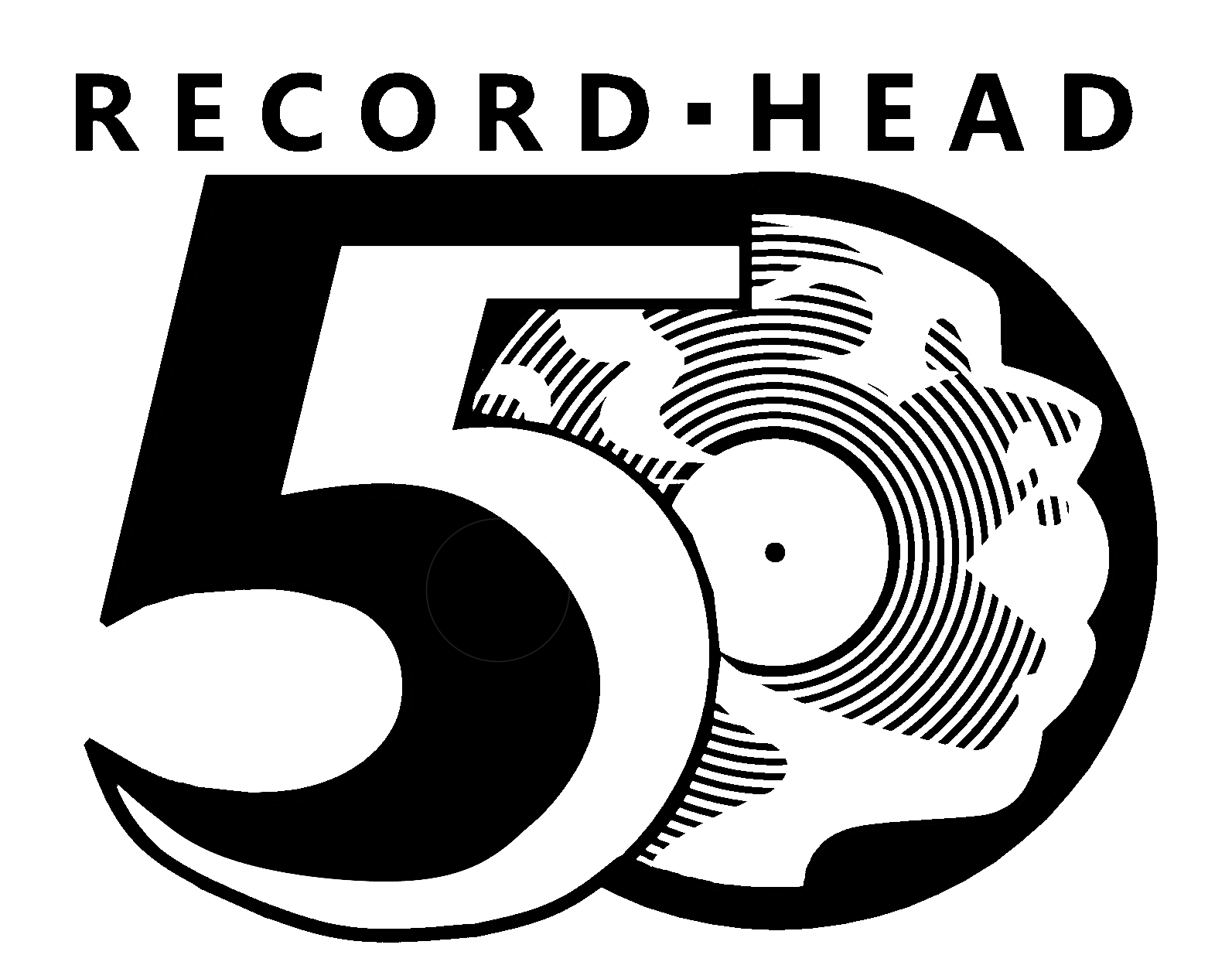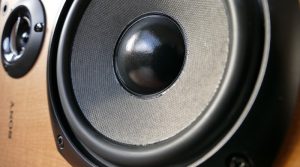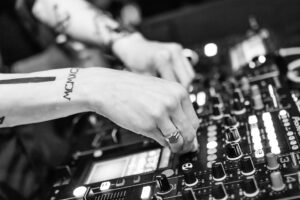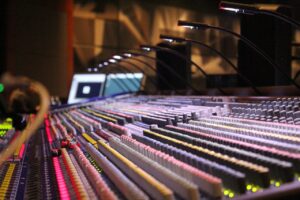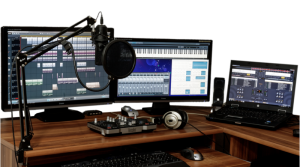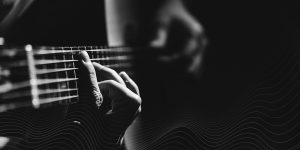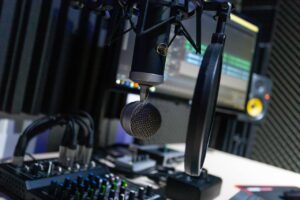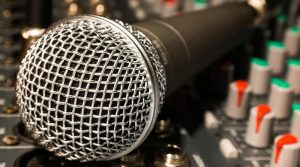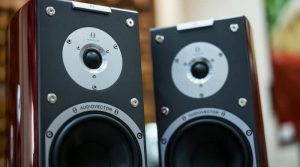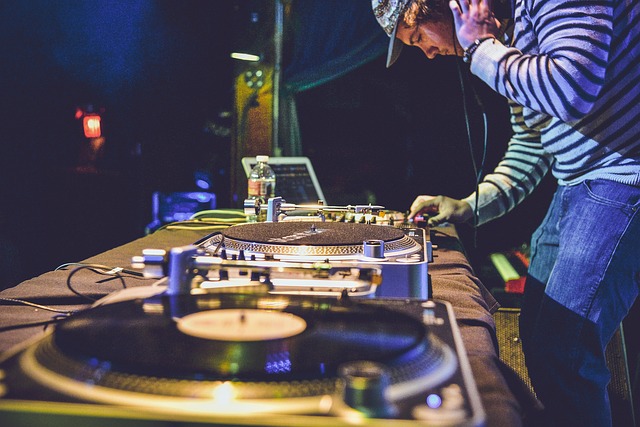
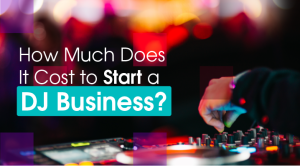 How much does it cost to start a DJ business? The answers can appear disheartening — big numbers like $10,000 to $30,000 are enough to scare you away from the game before you even begin playing. But with some creativity and research, it’s possible to get started without breaking the bank. In this article, we’ll dive into how to implement an affordable DJ business plan.
How much does it cost to start a DJ business? The answers can appear disheartening — big numbers like $10,000 to $30,000 are enough to scare you away from the game before you even begin playing. But with some creativity and research, it’s possible to get started without breaking the bank. In this article, we’ll dive into how to implement an affordable DJ business plan.
Let’s state the obvious: If you’re planning on becoming a mobile DJ, you need to spend some money. Not There is a good amount of music you need to own and there’s important equipment required to put on a good show.
Paying for music is unavoidable — you’ll always be purchasing it, because you don’t want to have outdated catalog and you don’t want to be a pirating scumbag, right? Right?! Good. But when it comes to equipment, there are ways to keep from devastating your bank account.
You can definitely acquire good gear at affordable prices, but first, we need to establish two disclaimers about buying musical equipment:
- Owning good gear is a long journey. Unless you’re coming in with a lot of capital, know that acquiring the equipment needed to start a DJ business is a journey that takes time. As you take more gigs and earn more respectable paychecks, you’ll have the ability to invest in better gear — this is a process all of us go through. Take a deep breath, keep an open mind and be prepared to manage your expectations while you get started. Your dream of rocking the party with the slickest gear and towers of speakers is not unattainable — it just may take a little while to get there.
- With music equipment, you mostly get what you pay for. That’s why it’s important to choose wisely when you’re starting on a budget. Resist the temptation to spring for the most affordable option, or else you’ll wind up spending more than you would have on the higher-quality unit that costs just a hundred dollars more. We’re here to save you money, but know spending a bit more now will usually save you money later. And most importantly, remember to read lots of reviews before you purchase anything.
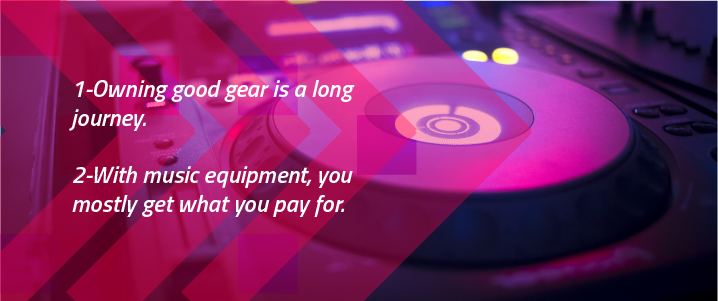
What Type of DJ Do You Want to Become?
There are many different types of DJs. Whether you yearn to become a club DJ, a scratch DJ, a producer or some combination of these, you’ll need to start working toward a particular set of gear.
- A club DJ puts on shows at dance clubs, where the clientele typically want to hear a specific style of music. Club DJs compile the best music they can find to satisfy a taste or mood, then go about crafting setlists. They generally require a sound system, a mixer, two turntables or a DJ controller, headphones and their music collection to put on a show.
- A scratch DJ is the virtuoso of the DJ world, and brings a rhythmic element to the traditional club model. Most famous for the famous “wikka-wikka” sound that results from rubbing a vinyl record back and forth under the needle, this type of DJ will also perform live remixes and put on a very engaging show. To start scratching, one needs a sound system, one to two turntables with slipmats, a specialized mixer and headphones.
- A music producer DJ creates mashups, original tracks, remixes and more in a studio setting. This job is more akin to a classic producer or mixing engineer role, in which much time is spent editing tracks on a computer. A computer is needed, as are a set of good monitors, turntables, a mixer, headphones and a digital interface.
So how can you obtain the most potentially expensive gear you’ll need: a sound system, turntables and a mixer? You’re also going to need some cables.

The Almighty Sound System
No matter what type of DJ you hope to be, you absolutely want a sound system. Without one, you are either at the mercy of your DJ friends’ generosity or at risk of losing a good chunk of your paycheck to renting one out.
This may seem overly scientific, but it’s helpful to understand how a speaker works if you’re going to be shopping for one that does what you need it to do.
A speaker takes the voltage from your audio file and sends it through a coil of wire, which sits in front of a magnet. This coil is attached to the speaker cone. The changing current creates an electromagnetic field with the magnet — hence, the coil and cone move back and forth. This sends pressure waves rippling through the air, and voila: We have sound!
OK, what does that teach us?
 So what are you looking for in speakers? A bigger cone size and more power are not terrible places to start. These are pieces of equipment you can buy used, as they hold up well and reveal their damage quickly and easily, so you can tell if something is busted before you buy.
So what are you looking for in speakers? A bigger cone size and more power are not terrible places to start. These are pieces of equipment you can buy used, as they hold up well and reveal their damage quickly and easily, so you can tell if something is busted before you buy.
If you choose to use a pair of speakers and no subwoofers, then you want speakers with a minimum 10” cone and a tweeter horn. A 10-12” cone will produce plenty of bass for smaller events, and the tweeter horn will handle the higher frequencies.
Note that, if you’re doing any type of production at home, you’ll also want to consider some studio monitors — these are smaller speakers meant for desktop use. They are responsible for giving you an accurate representation of what your tracks will sound like at the show.
Powered vs. Non-Powered Speakers
For smaller operations and ease of transport, powered speakers — that is, speakers that plug directly into the wall — are the better option. You don’t need to worry about a power amplifier or matching power ratings and impedances, and they are almost always plug-and-play.
When you get into bigger venues where you’re playing for several hundred people, you may want multiple main speakers and subwoofers. At this point, it’s a good logistical choice to have all your power in one place: a rack of power amplifiers, sitting right in front of you. If you’re just starting out, though, two powered mains are all you’ll need.
Should I Buy Subwoofers?
A subwoofer is a larger speaker, usually 15-18” or so, that transmits only bass frequencies. It’s what makes the floor rumble at large concerts, and is responsible for that low hum that seems to somehow sit below the rest of the music.
Should you buy subwoofers? Well, this is a “wants vs. needs” scenario. If you’re just starting out DJing and are on a budget, you don’t really need a subwoofer. You’re better off spending your money on a good set of speakers and good table equipment, which will get you by nicely in most small or medium-sized rooms.
That being said, it won’t take long before you want more powerful bass. When the time comes and budget permits, enter the market for a subwoofer or two — but no need to rush into it.
Three of the Best Live Application Speakers
- Yamaha DBR10 — Yamaha has put out great speakers for a long time, and this powered 10” speaker is no exception. With 700 watts to play with, a pair of these can easil
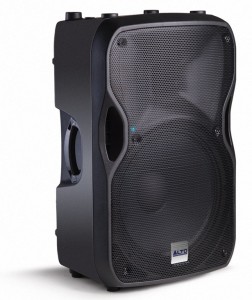 y rock a medium-sized room.
y rock a medium-sized room. - Electro-Voice ZLX12P — This is a budget speaker with a very non-budget level of quality. Designed to be lightweight and portable while still delivering heavy bass, these speakers are a great way to grab affordable speakers from a respected brand name.
- Alto TS115A — Though Alto is a less-known brand compared to giants like JBL, Yamaha and Peavey, their TS115A is a great speaker. The 15” woofer and 800 watts of power give it an enviable amount of bass, and the high end is equally clear and defined.
- Mackie SRM 450 – This speaker provides ease of use that is unparalleled. It provides studio quality sound at a fantastic pricing and is extremely easy to transport.
- Mackie Thumps – If you are looking for a great chest thumping low-end sound this is the speaker you need to have in your collection
For Home Practice and Music Production
- Creative GigaWorks T40 Series II — These are great beginner studio monitors because they do not require an additional subwoofer, they are angled slightly to converge sound at your head and they have an eye-catching aesthetic about them. These speakers are tall instead of wide, reducing their footprint on your desk.
- M-Audio Studiophile AV 40 — For a bit more money, you get a more robust speaker. Rated at 40W RMS, these heavy hitters provide great bass and clear treble, and also offer a good selection of input ports.
The suggestions above are just a small sample of good speakers to buy. Head into Record Head and you can see, touch and hear many different models of speakers at great prices — or check out our inventory online.
Turntables
The basic idea behind a DJ’s turntables is this: When a song on one turntable ends, the other turntable kicks off a new one. A stream of uninterrupted fun is born.
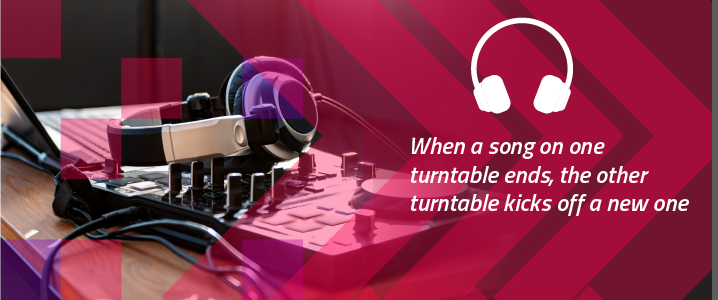
This simple concept has given rise to all the stylings, technological innovations and dazzling wizardry that have been the lifeblood of DJ music since its inception. Even with all the changes in format over the past decades — from vinyl to cassette to CD to MP3 — the spirit of turntable DJing has not vanished.
The main choice to make today is between analog or digital turntables. It’s a stylistic as well as a practical decision: Do you want the feel and rawness of vinyl beneath your fingers, or the portability and convenience of digital music? A digital turntable typically requires the use of a laptop, so be aware of this going in.
We’ll list some of the best analog and digital turntables here. Remember, it is important to get a feel for these devices, since you’ll spend quite a bit of time with your fingers on them. We also highly recommend visiting us in-store, since turntables have a lot of moving parts and easily damaged bits you’ll want to inspect yourself.
Vinyl Turntables
 Technics SL-1200 — The turntable that has redefined the DJing Industry. Some of the feature include its quality construction, pitch control, durability and beauty. Although production stopped in 2010, this is a great buy used!
Technics SL-1200 — The turntable that has redefined the DJing Industry. Some of the feature include its quality construction, pitch control, durability and beauty. Although production stopped in 2010, this is a great buy used!
Digital Turntables, aka DJ Controllers
- Pioneer DDJ-SB2 — This workhorse combines large jog wheels with plenty of toys to keep you grooving: filters, crossfaders, sampling, effects and more. You can run a party with this one piece of equipment and a laptop…and your speakers, of course.
- Roland DJ-202 — This DJ turntable is marketed more toward on-the-fly drum machine looping, beat battles and house parties. The truth is that it’s very versatile across a wide range of situations, and is extremely comparable with the Pioneer DDJ-SB2.
One important thing to note about the price of a digital turntable, otherwise known as a DJ controller, is that it’s effectively combining two turntables and a mixer into one unit. You can crossfade, add filters, scratch and loop all in one unit. Because you’re replacing other expenses, you shouldn’t shy away from spending a little more money.
Mixers
If you are running two separate analog turntables, have separate pads for scratching, use a vocal mic or do anything else other than using a single unit, you’ll need to consider a mixer. They are the unsung heroes of DJ music, because they perform an important, but unglamorous, role in the chain of sound.
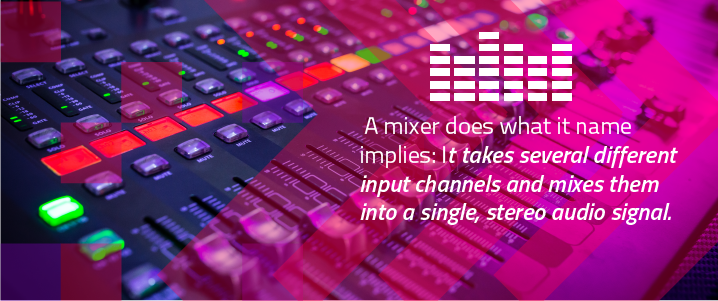
A mixer does what its name implies: It takes several different input channels and mixes them into a single, stereo audio signal. Mixers can range from two channels to more than a hundred, and their price goes upward proportionally to how many channels they offer. You will probably be able to get away with two channels — many DJ mixers only offer two — but you likely won’t need more than four. DJ mixers often have a crossfader to fade between the two different channels.
Good news, though: DJ mixers are small and cheap.
Many companies have descended from the heavens to bestow upon us a good selection of tiny mixer workhorses, and when you’re just starting out, you can definitely save money by purchasing a mixer in the $100 range.
- Numark M101 — The Numark M101 is a bare-bones, reliable mixer for DJs who need two channels and basic crossfading. It offers EQ, a mic input and different types of jacks for connecting to your speakers or power amp.
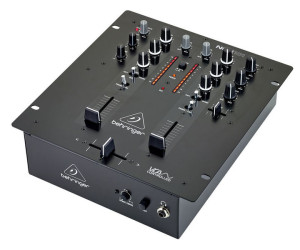 Behringer NOX101 — Behringer has a lot of bad press under their belts because they have been diligently producing budget gear for many years now. Much of it has been sub-par, but they have also created some exceptionally good budget gear: The NOX101 is one such example. With three-band EQ, changeable curves on each channel and balanced output ports, this is a great deal.
Behringer NOX101 — Behringer has a lot of bad press under their belts because they have been diligently producing budget gear for many years now. Much of it has been sub-par, but they have also created some exceptionally good budget gear: The NOX101 is one such example. With three-band EQ, changeable curves on each channel and balanced output ports, this is a great deal.
One thing to note, though: If you are using a digital DJ controller, you likely will have a built-in mixer. You should also consider other, non-DJ-specific options from companies like Mackie and Yamaha, since you may not require an additional crossfader in your setup.
Cables
Let’s speak for a moment about cables. This is one area where you should not cut corners, as they are a repeat offender on the “weakest link in the chain” list.
The reason is that cables get badly wrapped, stepped on, bent, plugged and unplugged until their solder joints crack and their wires fray.
Do not buy used cables. Get them new, and if possible, make sure they have a lifetime warranty on them. There is no better feeling than walking in with a faulty cable and walking out with a brand-new one, not having paid a cent.
Likewise, do not fall for laughably expensive cables. You are not going to hear noticeable sound quality differences between materials, so don’t get trapped paying $50 for a 20-foot instr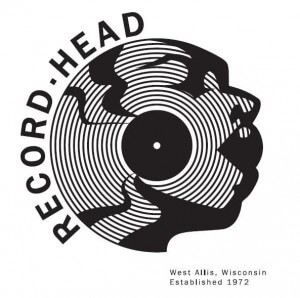 ument cable.
ument cable.
Get Started at Record Head
At Record Head, our goal is to help you find the gear you need at a price you can afford. We will help you choose the right speakers, turntables, mixers, cables and more with experience and friendly customer service. We offer both new and used items, so you’ll be happy with your bank account — and even happier with your gear. Who knows – you might soon be one of the best DJs of all time! You can also shop our records online.
